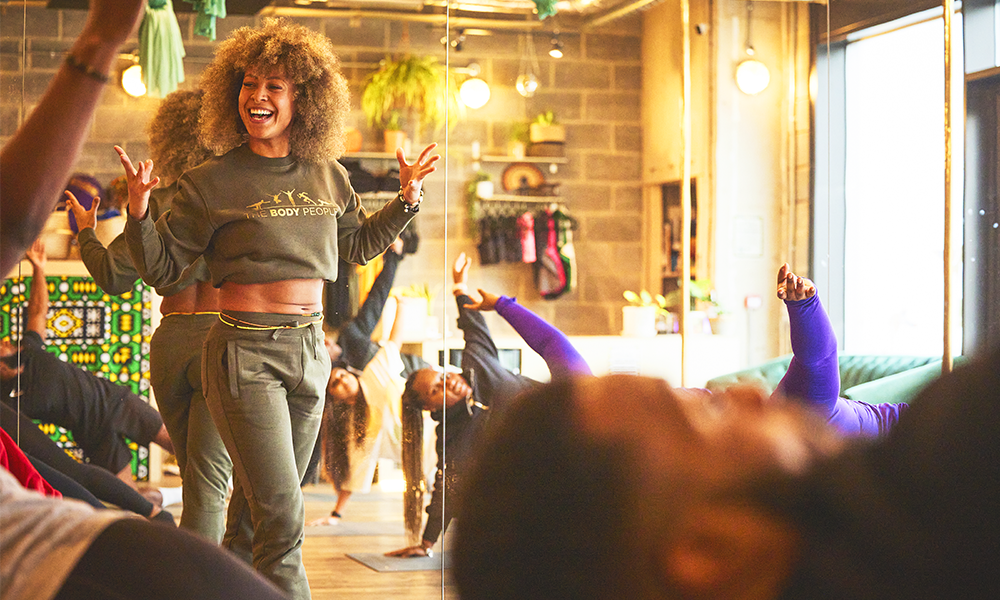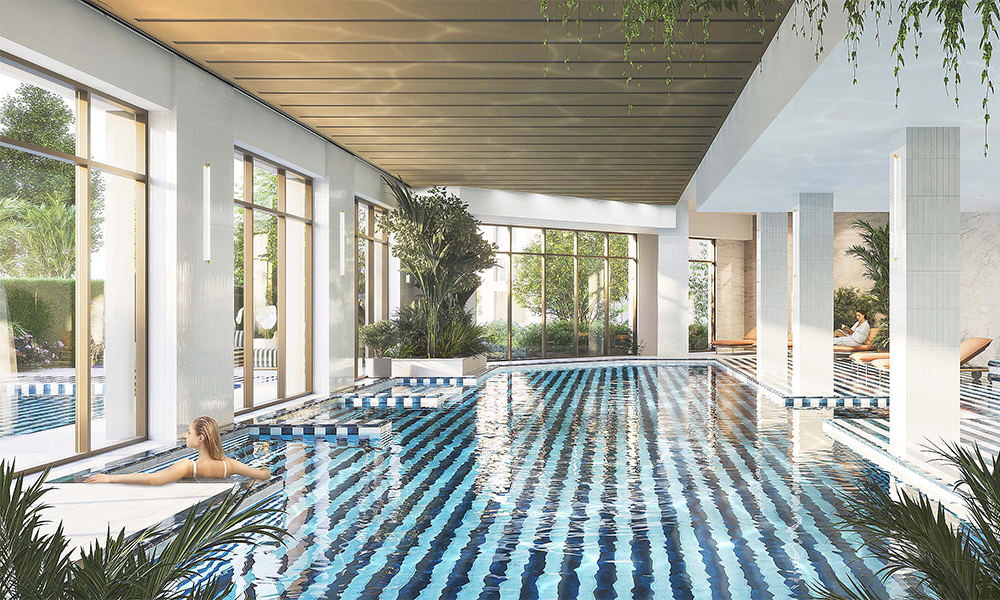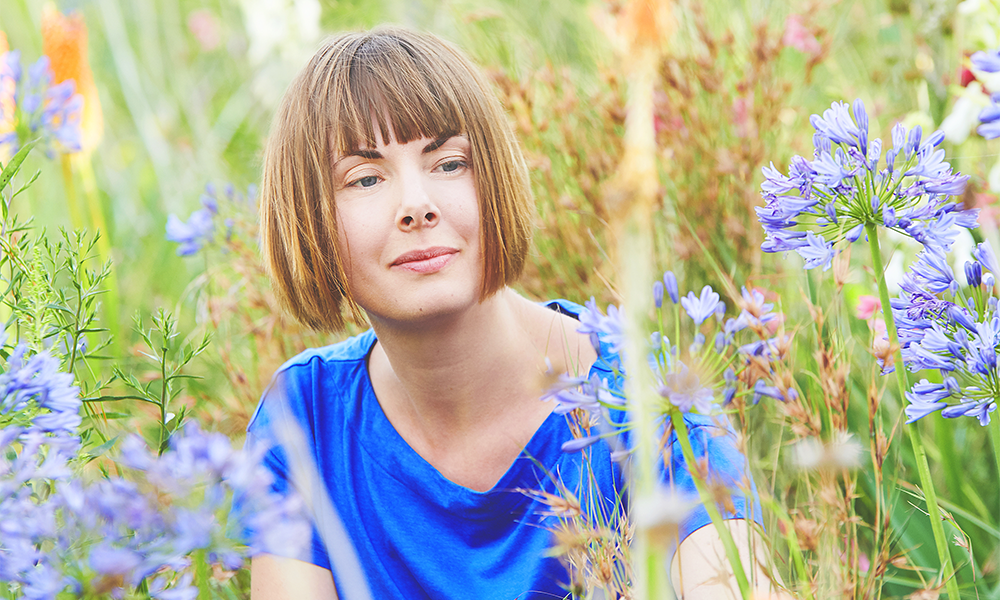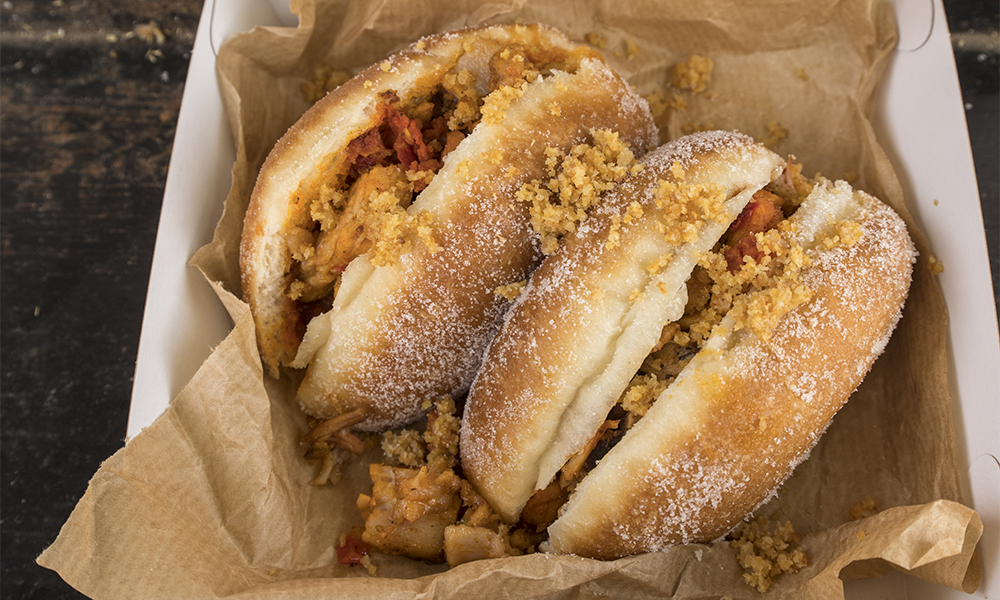Recently opened restaurant and bar promises traditional flavours and dishes from Greece with a twist in presentation and approach

Subscribe to our free Wharf Whispers newsletter here
A s I walk into Hera in Stratford for the first time, I receive a warm, unabashed and vocal welcome from the staff.
While the interior of its expansive, double-height space has been filled with high-end decor, it immediately manages the challenging trick of coming off as welcoming.
Its owners might be from a different part of the Mediterranean, but they’ve successfully extracted the bonhomie from a bustling Athenian taverna and transplanted it to a ground floor restaurant at Stratford Cross.
Located off the main drag between Westfield and the Queen Elizabeth Olympic Park, Hera has opened its doors with a weather eye on the future.
It’s opposite V&A East Museum, which is set to become a major pull for visitors from 2026 and is right beside a new footbridge to the cultural and educational hub whose full complement of organisations will include the London College Of Fashion, BBC Music Studios and Sadler’s Wells East.
Visitors and students need to eat and drink and the owners are betting Hera, with its views over the park to the Hackney Wick skyline, will be well-placed to serve them.
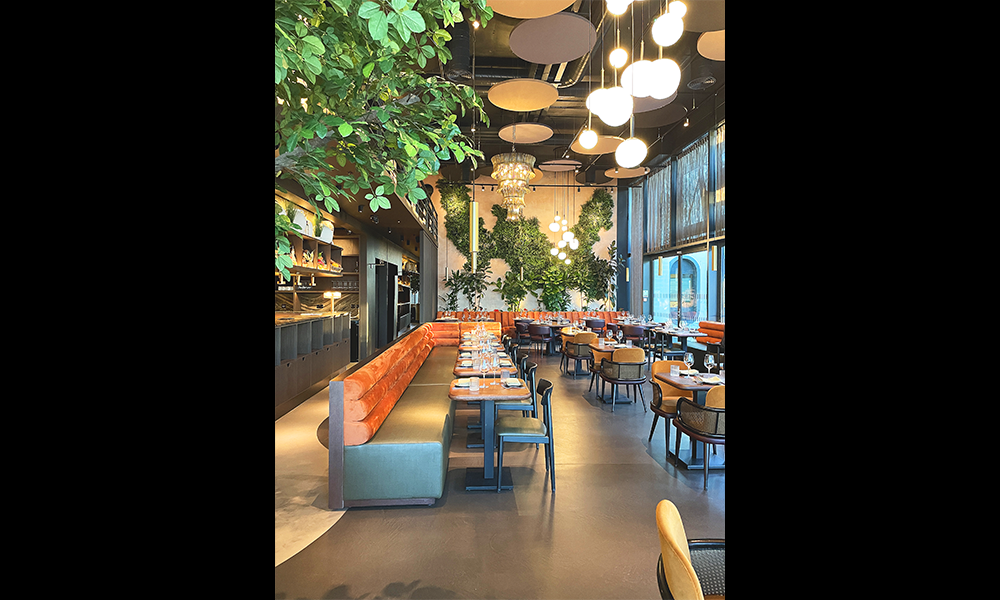
elevating Greek cuisine
“There aren’t many options in London for elevated dining when it comes to Greek food,” said Stefan Petrushev, the establishment’s marketing manager.
“While we look in some senses like a fine dining restaurant, we wanted to make our food and drink accessible – Stratford Cross is a modern area and we wanted to reflect that.
“The menu is Greek through-and-through, using seasonal ingredients with beautiful presentation on the plate.
“With the menu, we wanted to reflect different aspects of Greek cuisine such as seafood, vegetables and meat, but to make the dishes a little more intricate and sophisticated than you’d find in a casual dining setting.
“For example, with our starter of melitzano salata, everything is made fresh. It’s about taking people’s expectations and going beyond them with the flavours and the way the dishes look.
“One of the wonderful things about Greek cuisine is that there’s a simplicity to it – you can really taste everything that goes in.”

small plates at Hera
Hera’s menu is split into starters ranging in price from £4 to £9.
Beyond that, it’s essentially a small-ish plates place with dishes split into Cold And Raw, Garden, Farm and Sea.
There’s a bone-in sirloin for £40 and a whole grilled sea bass for £35, but the majority come in between the mid-teens and mid-20s.
The aim is to encourage sharing and sampling, with dishes arriving when ready rather than in sequence.
“In the run up to our official launch, we’ve tried to think of everything,” said Stefan, who grew up in Canning Town.
“It’s lovely during the day but at night it’s especially beautiful with all the lights visible through the window.
“The location doesn’t seem perfect yet, but it will be.
“With all of the openings at East Bank, we’re playing the long game.
“We’ll be right in the heart of it, especially with the unveiling of the new bridge, which will be the quickest way to reach the park from Stratford International station.
“In addition to the restaurant we will also have a winter garden which will be enclosed and fully heated in the winter and can then be opened up in the summer and that will be great.
“We’re also set on making sure we don’t replicate the formality of a West End restaurant.
“In terms of hospitality, we’re taking the things that work to ensure people get a professional service, but also the warmth of the Greek welcome.
“We’ll have the perfect lighting and the sexy groove of the music in the evening but without that intimidating atmosphere some restaurants can have.”

indulging in drinks
Beyond the food, there are the drinks and Hera boasts an illuminated wall filled with colourful, inviting bottles.
“We felt there was a space for a really nice wine and cocktail bar in Stratford,” said Stefan.
“We only have our signature cocktails on the list alongside plenty of Greek wines – sparkling, white, red and orange.
“They’re so nice they can be a little dangerous to play with, especially the white.”
It’s a list designed to pair well with the dishes on offer, which feature a panoply of Greek flavours.
There’s a dish of baked feta, wrapped in kataifi and bathed in a rich bath of lemon honey.
Grilled octopus comes with a thick mashed swirl of fava beans, while beef meatballs are rich with mint and jazzed up by a little pile of tzatziki.
These are dishes to dip in and out of, a less stuffy and traditional take on a series of well-known classics.
Everywhere there’s honey, thyme and aubergine.
Stefan said: “If you’ve never really tried Greek food, we’re a great place to start because we focus on making things just that bit more special.
“If you’re going to a restaurant, you want to have an experience and that’s what we offer.
“We have an incredible space here and we want people to feel that personal touch – that this is food made by people who really care.”

key details: Hera
Hera is located on Arber Way at Stratford Cross and is within easy walking distance from Stratford International and Stratford stations.
It’s open daily from 11am-11.30pm. The winter garden is set to open in due course.
Find out more about the restaurant and bar here
Read more: How Mike Joslin’s Bombe uses tech to help companies understand customers
Read Wharf Life’s e-edition here
Subscribe to our free Wharf Whispers newsletter here
- Jon Massey is co-founder and editorial director of Wharf Life and writes about a wide range of subjects in Canary Wharf, Docklands and east London - contact via jon.massey@wharf-life.com




















